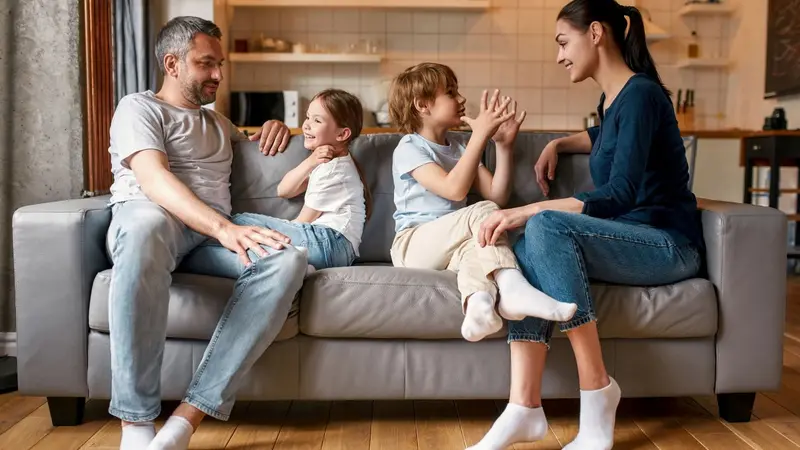
Healthy Kids
Healthy Kids
Listening to Kids Without Judgment: Nurturing Habits of a Harmonious Family
In an era when children are growing up in digital landscapes unfamiliar to many parents, establishing connections can feel like navigating a maze. But harmonious living is attainable through small, intentional moments that cultivate trust and emotional safety. Rather than solely emphasizing control or screen-time restrictions, deeper bonds can be created by tuning in with curiosity, presence and empathy. Here are some strategies that parents and caregivers can employ to bridge the gap and foster connection.
Validating Emotions
“For decades—perhaps centuries—children have received consistent messaging about emotions: control them, contain them and, whenever possible, conceal them. This approach wasn’t necessarily malicious; it reflected cultural values that prioritized stoicism and social harmony. The ‘good child’ was often the quiet child, the composed child, the one who didn’t ‘make a scene’,” says Lee Sowles, founder and CEO of Kind Mind, a program that teaches adults and children how to co-regulate, be kind and feel ready to learn. “When we support our kids’ emotions, we teach them that all feelings are valid—even the difficult ones—and then we can empower them with the skills they need to process emotions in healthy ways. This fosters trust, emotional resilience and a more harmonious home environment where everyone feels seen and safe, which is crucial because children thrive when they feel understood and connected.”
Remaining Calm and Present
To communicate effectively and foster positive exchanges with our children, it is critical to keep emotions in check. According to Janet Philbin, a clinical social worker, certified conscious parent and life coach, as well as the author of Show Up for Yourself: A Guide to Inner Awareness and Growth, if a child comes to us upset, crying, whining or demanding, the best response is to remain level-headed and attentive.
“Pausing and tuning in allows us to come into harmony because we are moving from a sympathetic state of fight/flight to a state of calm and presence,” she says. “We are regulated, and our child can come to us with their emotions, feeling safe. We do not react; instead, we become grounded and present, allowing us to meet our child where they are and tune in to what they need, which is underneath the behavior we’re seeing. This is how harmonious relationships are created, because we have regulated our nervous system, and our child can regulate theirs.”
Keeping a Shared Journal
An effective method to foster mutual trust and respect with a child is with a shared journal in which parents and kids are able to communicate with each other through the written word. “Using the journal creates space to respond from a place of our loving hearts without judgment and putting aside the need to fix,” explains Philbin. “Our children will feel heard and safe, ultimately creating harmony in the relationship.”
Philbin shares how her family makes use of a shared journal, noting, “Our kids write to us about what they are struggling with and leave the journal for us in a safe space. When we find the journal, we take our time to respond to our child. In that response, we can let them know we hear them, that their feelings matter and that their struggle is real. We stay away from solving the problem, and instead just let them know that we are supporting them to work it through. Then we hand the child back the journal, and this process continues.”
Establishing Rituals for Connection
Building a robust connection with a child doesn’t require grand gestures. Instead, it is about creating consistent, small moments that build an emotional rhythm. Here are a few suggestions:
• Make it a habit to take screen-free walks after dinner.
• Regularly journal about a common prompt—such as recounting a memorable or unexpected event—and then read the journal entries out loud to each other.
• Find opportunities to share common interests and spend quality time together, perhaps by playing the child’s favorite board game or video game.
Living harmoniously, particularly in parenting, is not solely about achieving balance, but also about cultivating presence. When we approach our children with empathy, curiosity and intention, we do not merely hear them; we genuinely see them. In this act of seeing, connection begins.
Christina Connors is a writer, singer and creator of a YouTube series for children. Learn more at ChristinaConnors.com.
Original article published at Natural Awakenings National


 By
By







